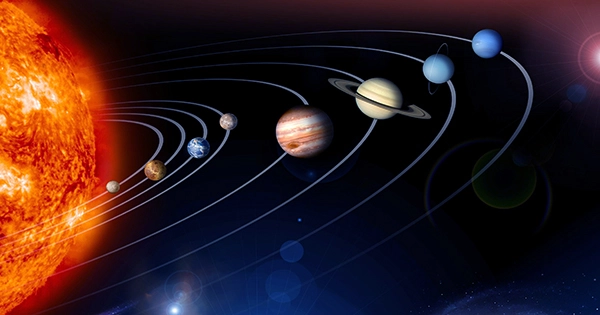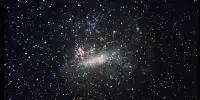Astronomers have gained fresh insights into how planets develop thanks to observations of a young binary star system. Planetary disks are cyclically sloshed about by the combined actions of two or more stars in a system containing two or more stars, and these dramatic shifts are expected to impact the development of worlds orbiting these stars. Understanding these systems is critical since almost half of all Sun-sized stars are in pairs. The observations of the binary star system NGC 1333-IRAS2A were the starting point for the research, which was published in the journal Nature. A disk of gas and dust surrounds the two stars. Researchers from Denmark, Taiwan, and the United States conducted simulations to investigate the system’s history and future.
The computer model revealed that the movement in the disk does not follow a continuous pattern based on a snapshot in time, i.e. recent observations. The binary stars appear to become up to 100 times brighter for short periods of time, lasting a few decades every few thousands of years, before fading back to their baseline. “A large amount of heat will be generated by the falling debris. In a statement, co-author Dr Rajika L. Kuruwita of the Niels Bohr Institute remarked, “The heat will make the star much brighter than usual.” “The gas and dust disc will be torn apart by these blasts. While the disc will reassemble, the bursts may still have an impact on the formation of the subsequent planetary system.”
The research was carried out using the Atacama Large Millimeter/submillimeter Array, which can detect emissions from intriguing compounds developing near stars. While there are presently no planets orbiting the binary system, the observatory can examine what chemicals are there and hypothesize on what could arise in the future. “Dust grains and the ice around them will evaporate as a result of the bursts’ heating. This might change the chemical makeup of the material from which planets are born,” said project leader Professor Jes Kristian Jrgensen of the Niels Bohr Institute at the University of Copenhagen.
Fresh observatories, such as the James Webb Space Telescope, the Square Kilometer Array, and the Extremely Large Telescope, will investigate systems like this even deeper, providing new insights into whether and how planets near binary stars may support life. “The discovery is intriguing because, within the next several years, the hunt for alien life will be armed with numerous new, incredibly strong tools,” Professor Jrgensen said. “This emphasizes the importance of comprehending how planets develop around various sorts of stars.” Such findings might indicate to areas where it would be particularly fascinating to look for signs of life.”
















